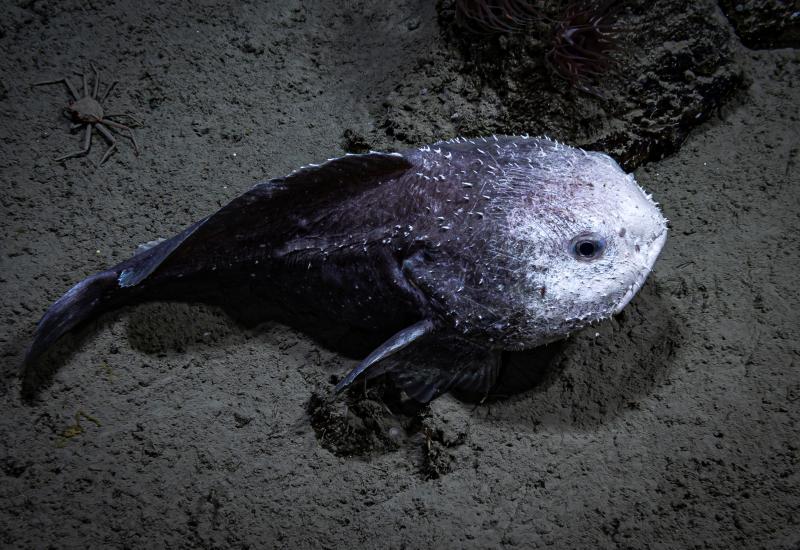The Spectacular World of Sponges
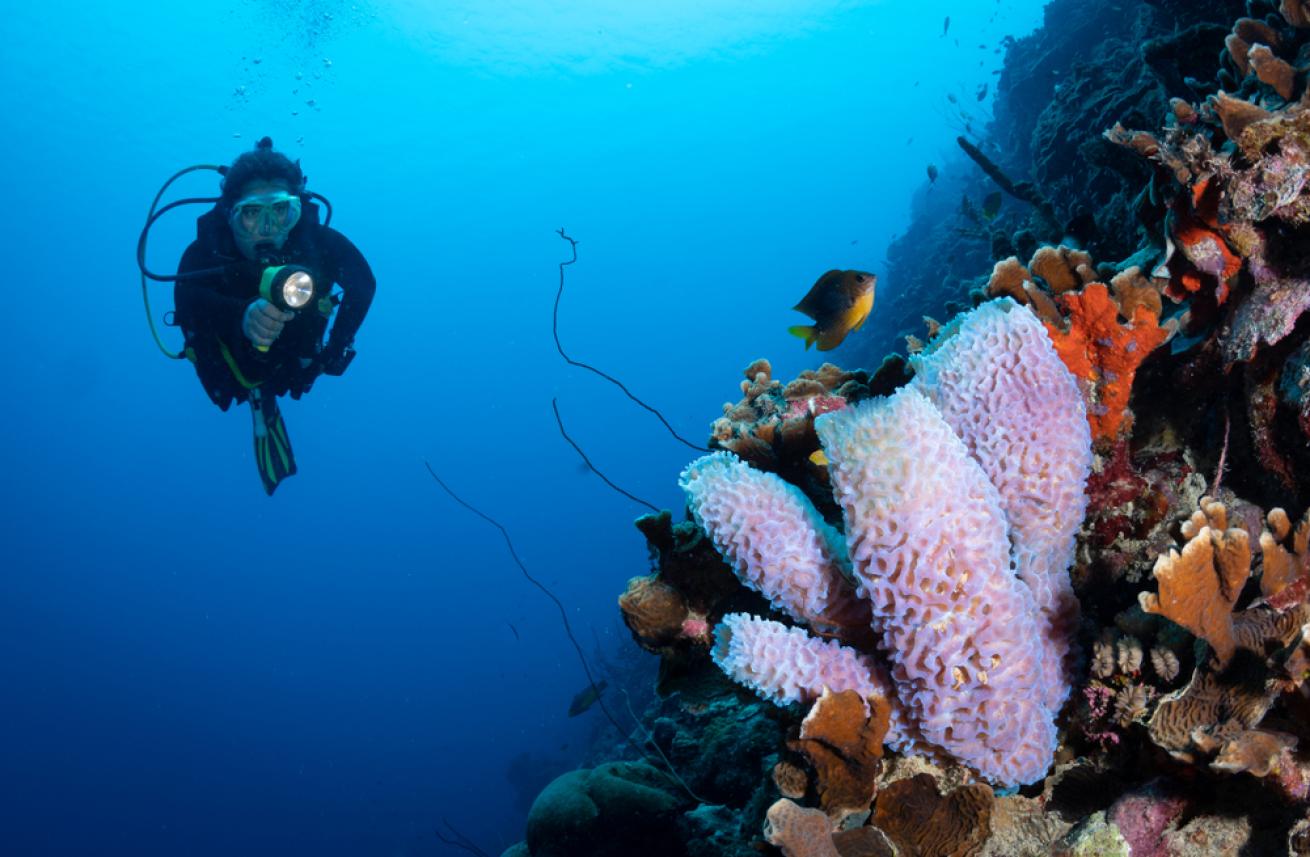
Shutterstock.com/timsimages.ukThere is much to learn about the spectacular world of sponges!
Marine sponges. They’re fluffy, sometimes crusty and sometimes slimy and they fill the reef with a rainbow of colors from red to purple. There are sponges shaped like balls, barrels, vases and tubes, some that grow in a branching rope-like structure and some even grow in thin layers encrusting the reef. The wide variety of colors and shapes is not by accident, but are all adaptations that evolved to help sponges survive in their environments.
These survival mechanisms must be working, because sponges are ancient. All sponges are in the phylum Porifera, and they were the first group of animals to branch off the evolutionary tree, with certain species having fossil records dating back to the Precambrian period 600 million years ago. In 2021, researchers even discovered an 890-million-year-old sponge fossil, which may be the earliest record of an animal found on Earth.
As a diver, content creator and former sponge researcher, I want to share my love and knowledge about these fascinating filter feeders with divers around the world. My hope is that you will notice and appreciate them too on your next scuba adventure!
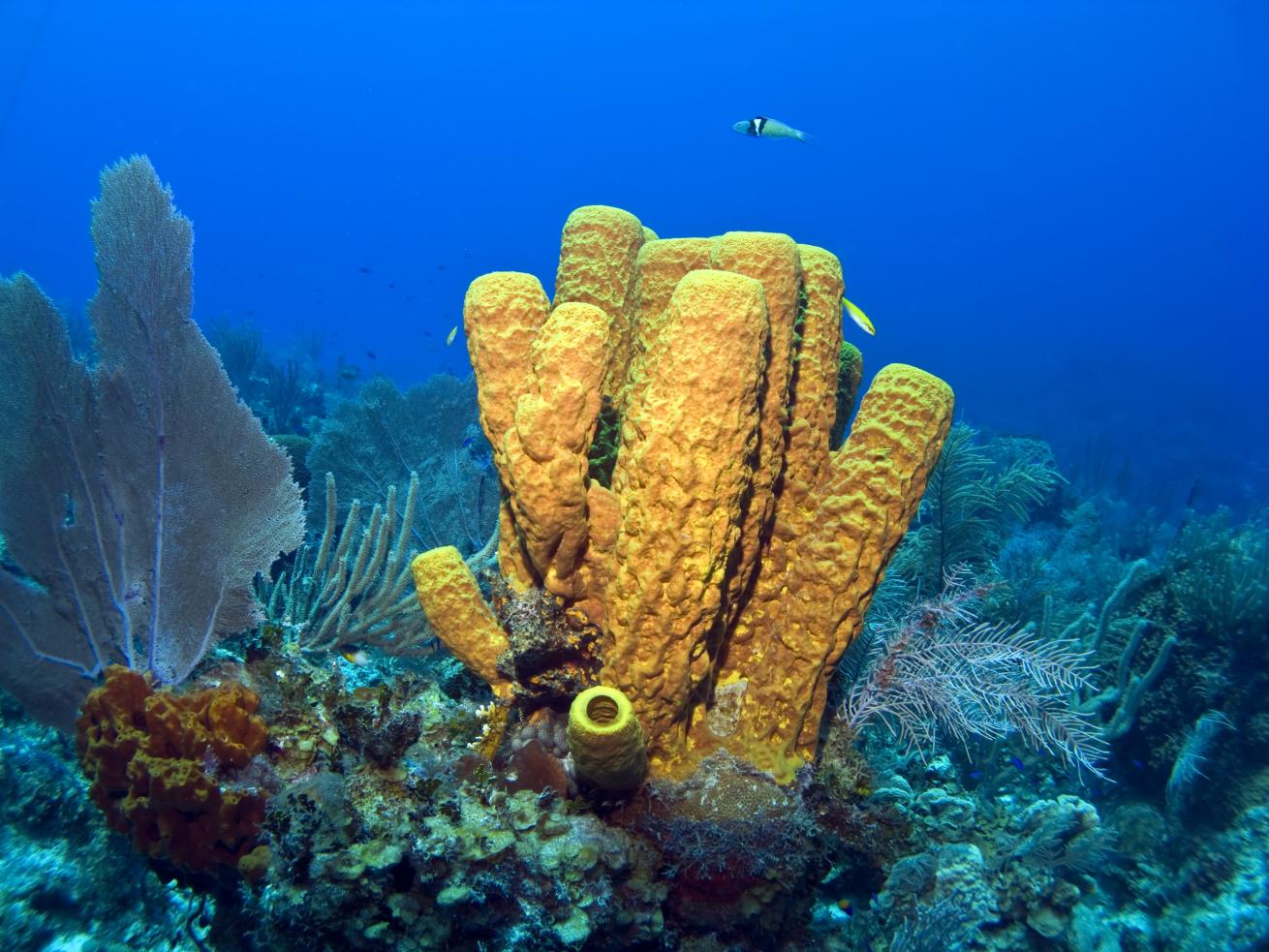
Shutterstock.com/Ocean Image PhotographySponges are some of the most colorful organisms divers find on the reef.
What is a Sponge? And, Are Sponges Animals?
Starting with the basic details, sponges are indeed animals. More specifically, they’re marine invertebrates. Similar to corals, they are sessile, which means once their larvae settle on the reef, the animal grows in that spot and will not move much over its lifetime.
Sponges are very simple multicellular animals with no central nervous system, muscles or organs. Each species is different, but in general their skeleton is made up of glass-like structures called spicules, a protein called spongin that supports the spicules, and mineral compounds like calcium carbonate and aragonite. The shapes of the spicules and the arrangement of the spongin fibers varies by species and is one of the ways scientists can identify a sponge under a microscope. Nowadays, it’s becoming more common to use DNA for species identification.
Related Reading: New Zealand Sea Sponges Suffer Mass Bleaching For The First Time
Sponges are found all throughout the ocean, from coral reefs and dock pilings to the deep sea, and they grow in both tropical and cold environments. There are even some freshwater sponges. There are around 10,0000 known sponge species, and scientists are still discovering new species throughout the world, particularly in deep-sea habitats.
Anatomy and Physiology
Being that sponges are animals, they do what animals do: eat, poop and make babies. Sponges don’t really “poop” like most animals do, but they eat all day and night, and the way they eat is pretty fascinating. Inside the winding canals of their porous bodies, special cells with tiny hair-like structures called flagella pulse in unison and create a water current. Water gets pulled into the small openings of the sponge (the ostia), and bacteria from the water get trapped in special chambers where nutrients are absorbed. Then water and waste flow out of the larger openings (the osculum) of the sponge and back into the ocean. A Harvard study found that a single sponge can filter 24,000 liters of water in one day.
While most sponges are filter feeders, there are actually some carnivorous sponges, such as the harp sponge. Cladorhizidae are a family of carnivorous sponges that feed on ocean-dwelling crustaceans and small invertebrates. These sponges have a long lifespan (500-1000 years), and represent the most diverse group of sponges.
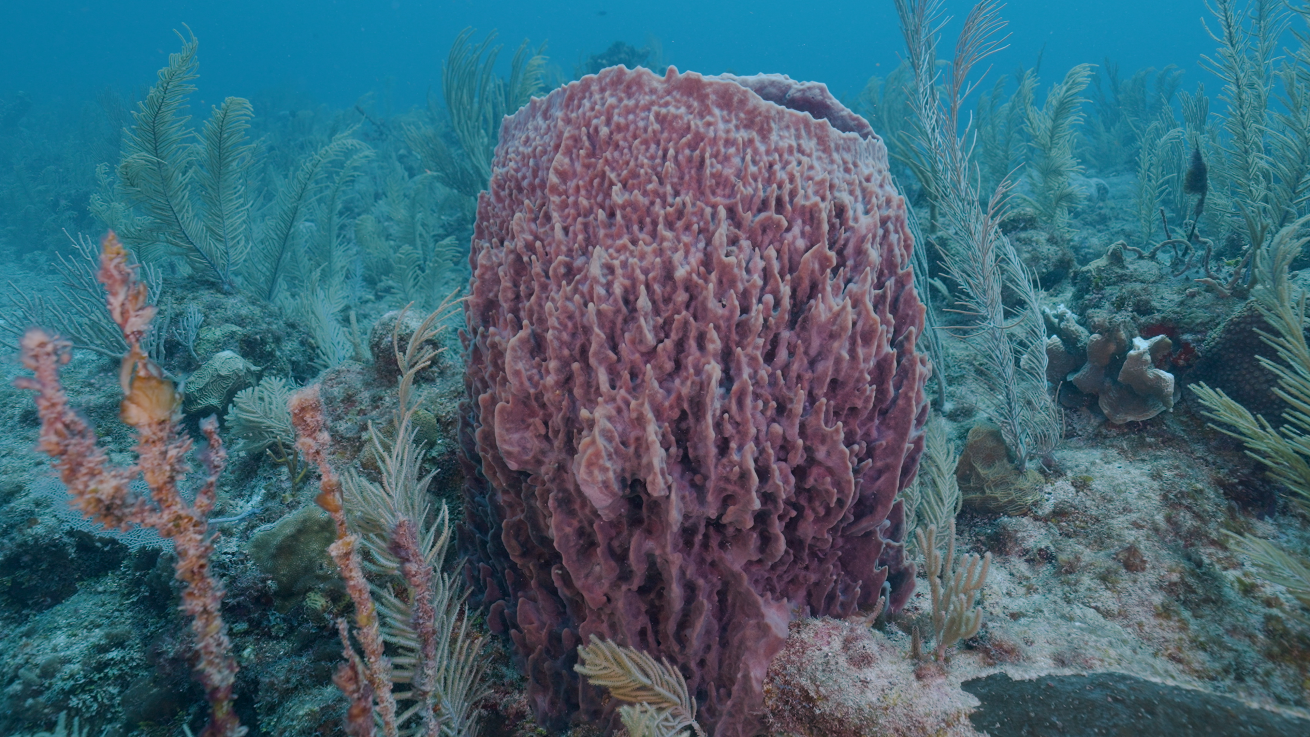
Kristin PaterakisThe giant barrel sponge is commonly found in Florida and the Caribbean.
Importance of Sponges
Sponges are an important part of coral reefs and deep-sea ecosystems for many reasons. Similar to corals, they provide structure for other organisms to attach to, build their homes in and hide from predators. If you peek into the large opening of some tube or barrel sponges, you may find critters like lobsters, crabs and fish. Inside the smaller, winding canals of sponges, there are tiny animals like brittle stars and entire colonies of amphipods and pistol (snapping) shrimp. There are many different species of snapping shrimp, and each species of shrimp is selectively drawn to only one or a few particular sponge species.
The same is true for the many different types of bacteria that live in sponges. Certain sponges are almost always found with the same type of bacterial colonies living within them. These relationships help the sponges produce special chemical compounds that protect them from diseases and predators. Researchers have found that similar to how we make drugs from plants on land, the chemicals produced by some sponges are useful to humans for making anti-microbial, anti-viral, anti-inflammatory and anti-cancer drugs. Every year, over 200 new chemicals are discovered from sponges!
Related Reading: Shooting Crustaceans: How to Get Stunning Underwater Images
Due to the unique way that sponges eat, and the large volume of water that passes through them each day, they also play an important role in cycling vital nutrients throughout the marine ecosystem, such as carbon, ammonium, nitrate and nitrite that help other life in the ocean thrive.
Cool Sponges to Know
Species: Tectitethya crypta
Fun Fact: Used to create AZT, a breakthrough in HIV/AIDS treatment in the late 1980s, as well as antiviral drugs for herpes. This sea sponge was later used to make Remdesivir, an antiviral drug to treat COVID-19 patients.
Range: Shallow water on sandy bottoms throughout the Caribbean and Bahamas.
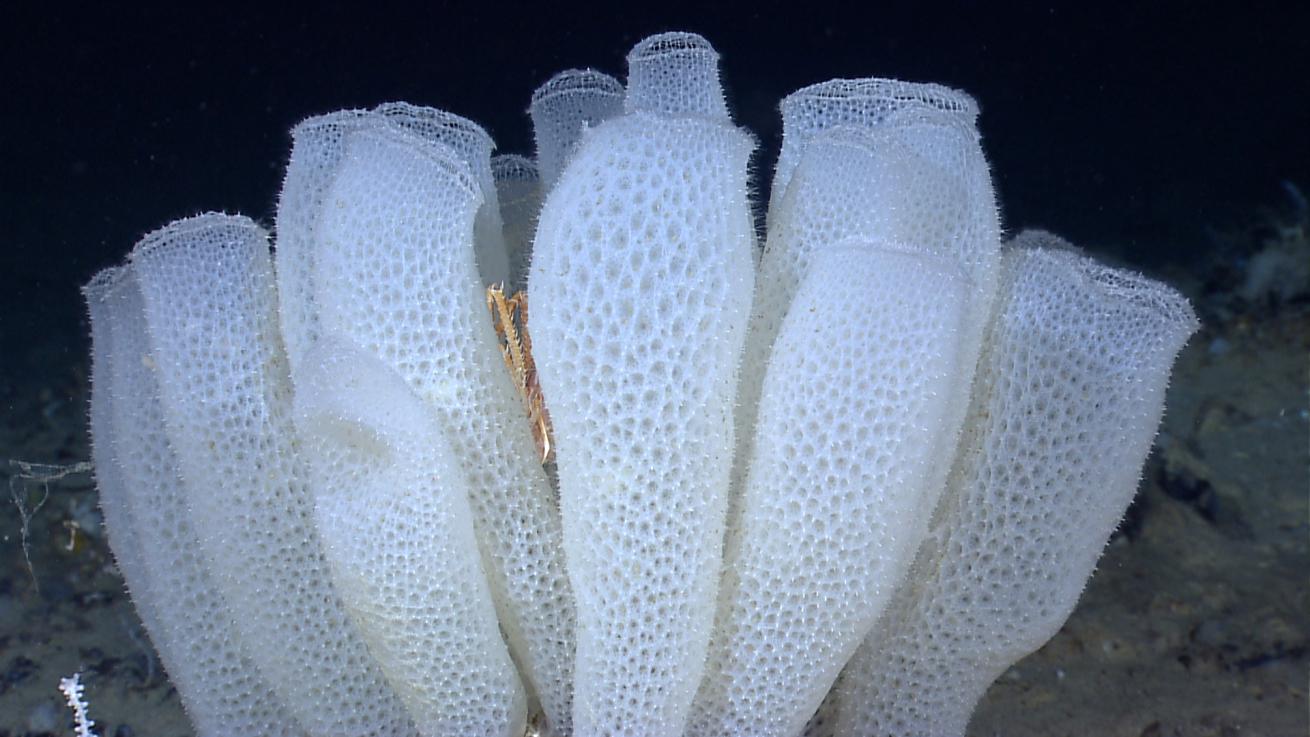
NOAA Photo LibraryA group of Venus flower basket glass sponges (Euplectella aspergillum) glass sponges with a squat lobster in the middle.
Species: Venus’ flower basket (Euplectella aspergillum)
Fun Fact: This type of sponge is known as a “glass sponge”. The barrel-shaped body is made of a latticework of fused glass (silica) spicules, giving it a lacey appearance. This structure is of great interest in materials science as it is very strong and flexible, and may inspire the construction of future skyscrapers.
Range: Deep sea in the Western Pacific Ocean near the Philippine islands.
Species: Harp sponge (Chondrocladia lyra)
Fun Fact: These deep-sea sponges are carnivores, rather than filter feeders. They have long vertical branches that they use to catch tiny shrimp, crabs, and debris drifting by in the water.
Range: Deep sea in the Northeastern Pacific Ocean.
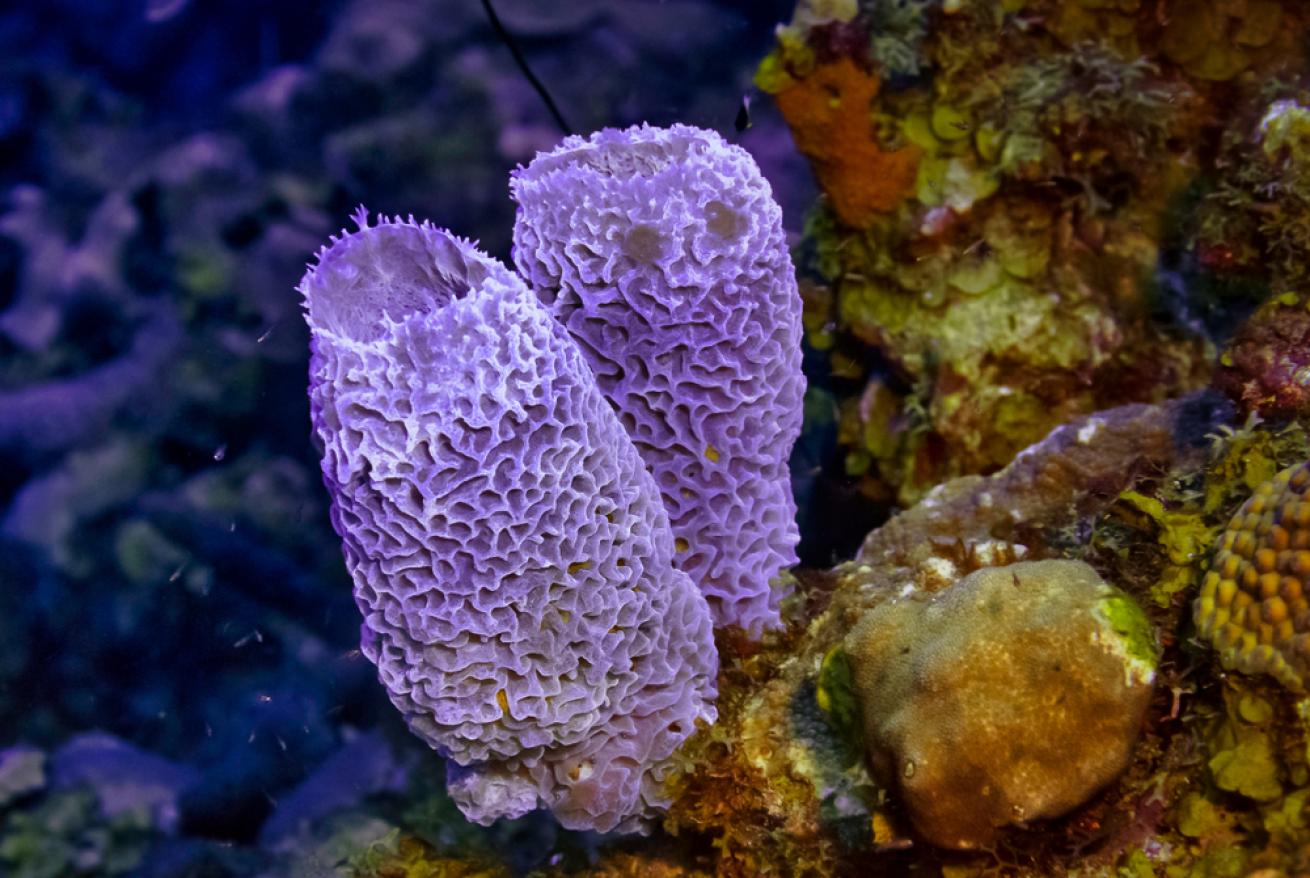
Shutterstock.com/Focused AdventuresImage of azure vase sponges.
Species: Azure vase sponge (Callyspongia plicifera)
Fun Fact: One of the world’s most colorful and beautiful sponges. It can come in varieties of iridescent blue, purple, or pink, and when it is not iridescent it is usually a creamy orange color. It is often shaped like a fan, tube, or a vase, and it has a maze-like texture, similar to a brain coral.
Range: Shallow waters up to 60 feet throughout the Caribbean, the Bahamas and Florida.

